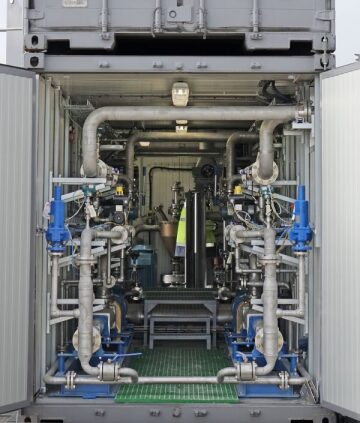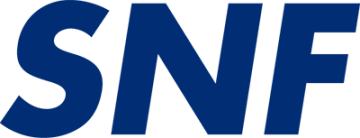The COVID-19 crisis has led to an unprecedented situation in the oil industry, with severe oil price depreciation due to sudden demand reduction and failed production cut agreements. Oil companies have been forced to reduce their budgets, and oil exploration has been cut or reduced. Upon return to pre-COVID-19 demand levels, more oil production, and reserves bookings will be required from the existing wells. In this context, quickly and easily maximizing production and proven reserves of existing assets in a cost-efficient way is paramount. Polymer flooding can increase the recovery factor (RF) over waterflooding by up to 20% of the original-oil-in-place (OOIP) at only $3 to $6 per extra barrel of oil.
At the same time, societal pressure is growing and requires immediate action to reach the net-zero production emission target by 2050. Polymer flooding can contribute towards meeting that target by reducing CO2 emissions per barrel by 3–6 times. This reduction is primarily achieved through a more efficient sweep of oil within the reservoir, resulting in water cut reduction and, ultimately, a decrease in required pumping energy at the producers and less taxing on fluid separation equipment and processes. A reduction in produced water can help lower Greenhouse Gas (GHG) emissions [1]. Operators report significant water cut reduction during polymer EOR operations, with the reversal in fluid cut resulting in increased oil production. It is not uncommon for mature reservoirs to reduce the water-to-oil (WOR) ratio by a factor of six [2,3]. For green or less mature fields, polymer flooding is more efficient in terms of utility factor (UF) [4], which is defined as kg of polymer required per barrel of incremental oil. This results in both a recovery and cost efficiency on the EOR process. With the acceleration in the recovery of oil, several years of water and energy consumption are avoided for the overall surface facility operations [5], which would include all operational factors (e.g., fuel, travel, utilities, supply, etc.). Thus, the carbon intensity of crude oil can be further reduced.
Polymer flooding is a proven technology with more than 300 projects worldwide. These projects recover more oil, in a shorter timeframe, and at a reduced environmental footprint compared to water-flooding projects.
Currently, 60% of global brownfield production is from water injection, either as pressure support or in flooding operations, delivering recovery factors from 20 to 40%, OOIP. Polymer flooding is a proven technology with more than 300 projects worldwide. These projects recover more oil, in a shorter timeframe, and at a reduced environmental footprint compared to water-flooding projects. This EOR technique has been economically and technically successful in full-field projects, such as India (Mangala), Canada (Pelican Lake, Suffield, Medicine Hat), Argentina (Diadema, Grimbeek), China (Daqing, Shengli, Dagang, etc.), the Middle East (Marmul) and Eastern Europe (Patos Marinza, Kazakhstan fields).
In the 1990s, SNF partnered with CNPC in China in the Daqing EOR full-field project. There, SNF built and commissioned the world’s first captive polymer production plant for polymer EOR. Since then, many EOR projects have been documented. These projects have shown that polymer flooding increases RF by 15–20% of the OOIP [6–13] over water-flooding. Furthermore, these projects report an average UF of 1.7 kg of polymer per incremental barrel of oil, or 80 tons of additional oil per ton of polymer injected. This UF is attractive, considering today’s polymer costs. Thus, polymer flooding can generate significant short-term production with a low incremental cost compared to exploration.
This “plug and pump” approach accelerates the implementation of polymer injection. In turn, this modular approach offers operators flexibility by enabling incremental deployment from pilot to potential full-field development, as well as simple facility relocation to another part of the field if needed.
SNF has also developed surface facilities integrated into sea containers, commissioned before transport to onshore or offshore sites, and connected to existing water pipelines [14]. This “plug and pump” approach accelerates the implementation of polymer injection. In turn, this modular approach offers operators flexibility by enabling incremental deployment from pilot to potential full-field development, as well as simple facility relocation to another part of the field if needed. Thus, CAPEX is phased with the different project phases, helping to maximize efficiencies and return on investment. Also, rental options are possible.
Maintaining combined OPEX and CAPEX at $3 to $6 /bbl allows polymer flooding to be economically attractive, even in a low oil price environment, while adding proven reserves and accelerating oil recovery.
Unquantified additional savings have been observed from the drag reduction effect the polymer has on produced water transport. This drag reduction effect can be seen when the polymer presence exceeds 50 ppm, with up to 70% less friction of the fluid on pipes, elbows, etc. New oil and water separation techniques also enable reducing the fresh polymer consumption by up to 35% after polymer breakthrough by reinjection of the produced polymer. This polymer becomes a high value sustainable recycled material. Furthermore, overall oil field chemical consumption can also be reduced, immediately resulting in proportional cost savings and GHG reduction associated with the production.
Deployment of polymer flooding is a cost-effective approach to maximizing the productivity of your current assets while preserving the environment by reducing water use and GHG emissions.
Specific to the GHG footprint of the polymer itself, SNF’s manufacturing processes are designed to minimize the environmental impact of our operations. Our primary monomer is produced enzymatically at room temperature under atmospheric pressure. Given the high volumes involved, this biological continuous catalytic process makes SNF a pioneer of soft chemistry. Polyacrylamide is carbon-efficient chemistry since only 3 carbons per repeating unit provide the benefit of the macromolecular structure to the injected water (as opposed to 10 carbons for polyethylene terephthalate and 8 for polystyrene).
Challenging times provide an opportunity to innovate. Deployment of polymer flooding is a cost-effective approach to maximizing the productivity of your current assets while preserving the environment by reducing water use and GHG emissions.

SNF is the leader for EOR polymer manufacturing, with more than 20 local production plants near oil production areas combined with unique logistics and engineering services to bring the polymer from the plant to the reservoir simply and efficiently.
With global sales of about $4B ($1B for the Oil industry), SNF is the leader for EOR polymer manufacturing, with more than 20 local production plants near oil production areas combined with unique logistics and engineering services to bring the polymer from the plant to the reservoir simply and efficiently. SNF is uniquely positioned to support polymer EOR technology from FEED to production, including field servicing when necessary.

Our chemists, engineers, and reservoir experts are here to answer your questions and to help you with every step of your project. www.snf.com, eor@snf.com
References
(1) Farajzadeh, R.; Zaal, C.; van den Hoek, P.; Bruining, J. Life-Cycle Assessment of Water Injection into Hydrocarbon Reservoirs Using Exergy Concept. J. Clean. Prod. 2019, 235, 812–821. https://doi.org/10.1016/j.jclepro.2019.07.034.
(2) Dong, H.; Fang, S.; Wang, D.; Wang, J.; Liu, Z. L.; Hou, W. Review of Practical Experience & Management by Polymer Flooding at Daqing; Society of Petroleum Engineers, 2008. https://doi.org/10.2118/114342-MS.
(3) Juri, J. E.; Ruiz, A. M.; Pedersen, G.; Pagliero, P.; Blanco, H.; Eguia, V.; Vazquez, P.; Bernhardt, C.; Schein, F.; Villarroel, G.; Tosi, A.; Serrano, V. Grimbeek2: First Successful Applica- tion Polymer Flooding in Multilayer Reservoir at YPF. Interpretation of Polymer Flooding Response; Society of Petroleum Engineers, 2017. https://doi.org/10.2118/185487-MS.
(4) Delamaide, E. Comparison of Primary, Secondary and Tertiary Polymer Flood in Heavy Oil - Field Results; Society of Petroleum Engineers, 2016. https://doi. org/10.2118/180852-MS.
(5) Poulsen, A.; Shook, G. M.; Jackson, A.; Ruby, N.; Charvin, K.; Dwarakanath, V.; Thach, S.; Ellis, M. Results of the UK Captain Field Interwell EOR Pilot; Society of Petroleum En- gineers, 2018. https://doi.org/10.2118/190175-MS.
(6) Wang, D.; Zhang, J.; Meng, F.; Liu, H.; Li, L.; Han, B.; Qi, L. Commercial Test of Polymer Flooding in Daqing Oil Field Daqing Petroleum Administrative Bureau; Society of Petro- leum Engineers, 1995. https://doi.org/10.2118/29902-MS.
(7) Wang, D.; Cheng, J.; Wu, J.; Wang, G. Experiences Learned after Production of More than 300 Million Barrels of Oil by Polymer Flooding in Daqing Oil Field; Society of Petro- leum Engineers, 2002. https://doi.org/10.2118/77693-MS.
(8) Anand, A.; Al Sulaimani, H.; Riyami, O.; AlKindi, A. Success and Challenges in Ongoing Field Scale Polymer Flood in Sultanate of Oman - A Holistic Reservoir Simulation Case Study for Polymer Flood Performance Analysis & Prediction; Society of Petroleum Engineers, 2018. https://doi.org/10.2118/190431-MS.
(9) Juri, J.-E.; Ruiz, A.; Serrano, V.; Guillen, P.; Thill, M.; Kichick, L.; Alonso, P.; Lucero, A.; De Miranda, V.; Mac Donald, W.; Figueroa, E.; Robina, N.; Vera, M.; Figueroa, E.; Di Pauly, F.; Rojas, W.; Ojeda, N. A Successful 18%STOOIP 4-Injector Polymer Pilot Expands To 80 New Injectors In 6 Years Adopting A Modular Concept In Grimbeek Fluvial Reservoirs; Inter- national Petroleum Technology Conference, 2020. https://doi.org/10.2523/IPTC-20285-MS.
(10) Delamaide, E.; Let, K. M. S.; Bhoendie, K.; Paidin, W. R.; Jong-A-Pin, S. Interpretation of the Performance Results of a Polymer Flood Pilot in the Tambaredjo Oil Field, Suri- name; Society of Petroleum Engineers, 2016. https://doi.org/10.2118/181499-MS.
(11) Sieberer, M.; Clemens, T.; Peisker, J.; Ofori, S. Polymer Flood Field Implementation - Pattern Configuration and Horizontal versus Vertical Wells; Society of Petroleum Engineers, 2018. https://doi.org/10.2118/190233-MS.
(12) Batonyi, A.; Thorburn, L.; Molnar, S. A Reservoir Management Case Study of a Polymer Flood Pilot in Medicine Hat Glauconitic C Pool; Society of Petroleum Engineers, 2016. https://doi.org/10.2118/179555-MS.
(13) Guo, H.; Dong, J.; Wang, Z.; Liu, H.; Ma, R.; Kong, D.; Wang, F.; Xin, X.; Li, Y.; She, H. 2018 EOR Survey in China-Part 1; Society of Petroleum Engineers, 2018. https://doi. org/10.2118/190286-MS.
(14) Juri, J.; Ruiz, A.; Schein, F.; Serrano, V.; Thill, M.; Guillen, P.; Tosi, A.; Pacchy, M.; Soto, L.; Therisod, A.; Paura, M.; Lauro, P.; Alonso, P. Grimbeek Successful Polymer Pilot Extends to 80 Injectors in Factory-Mode Development at CGSJ Basin; European Association of Geoscientists & Engineers, 2019; Vol. 2019, pp 1–14. https://doi.org/10.3997/2214-4609.201900061.



